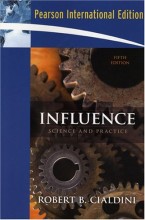Summary: Advanced Clinical Neuropsychology
- This + 400k other summaries
- A unique study and practice tool
- Never study anything twice again
- Get the grades you hope for
- 100% sure, 100% understanding
Read the summary and the most important questions on Advanced clinical neuropsychology
-
College 1: kosten efficientie
This is a preview. There are 3 more flashcards available for chapter 06/02/2018
Show more cards here -
Where do NP use their knowledge for?
Assessment, diagnosis, treatment, rehabilitation of patients across lifespan with neurological, medical, neurodevelopmental and psychiatric conditions as well as other cognitive or learning disorders. -
What principles do NP use to evaluate what in a pt.?
Principles, techniques and tests: psychological, neurological, cognitive, behavioral and physiological
To evaluate pt.: neurocognitive, behavioral, and emotional strengths and weaknesses and their relationship to normal and abnormal central nervous system functioning -
Name 11 dimensions of a clinical NP research
1. Processing speed
2. Attention
3. Memory and learning
4. Executive functioning
5. visuospatial abilities
6. Language and speak
7. Perceptual functioning
8. Psychomotor functioning
9. Emotion and motivational characteristics
10. Social functioning and social cognition
11. self-awareness in functioning and decision-making -
Due to administration of NP tests, scoring, interpretation and reporting of test results being time consuming, NP examinations are expensive. Why would one do a NP examination? Explain your answer.
Because of markers of values. This refers to money equivalent (cost saving) of service received. A comparison is made between costs of assessment and treatment with money saved by avoiding other health care costs and by returning an individual to work and social responsibility -
College 2: fatigue
This is a preview. There are 18 more flashcards available for chapter 07/02/2018
Show more cards here -
Fatigue is viewed both as symptom as well as disease, name two characteristics of fatigue as a symptom and a characteristic of fatigue as a disease
Symptom:
1. most disabling symptom in diseases by affecting: physical, psychological and social-well being
2. Non-specific symptom because it is indicative of many causes or conditions: neurological, psychiatric, medical, medications and unhealthy lifestyles
Disease:
1. Often part of group 'unexplained illnesses' with little understanding of its causes -
Name the problem and a consequence of the problem regarding a definition of fatigue
No general consensus on a universal definition of the term “fatigue”. As a consequence: Lack of a consensual definition remains a major obstacle to understanding the clinical manifestations of fatigue -
Name two ways fatigue can be conceptualized
1. a subjective feeling: A subjective lack of physical and/or mental energy that is perceived by the individual or caregiver to interfere with usual or desired activities
2. a performance decrement: Anyexercise-induced reduction in the maximal capacity to generate force or power output -
Is there usually good correlation between subjective and behavioural fatigue? Name a consequence
No, lack of correlation hinders better understanding of fatigue -
Give a definition of peripheral fatigue and central fatigue and an example of why it is difficult to categorise them
Peripheral fatigue is defined as failure to sustain force or power output because of neuromuscular dysfunction outside of the central nervous system
Central fatigue is defined as resulting from failure to achieve and maintain the recruitment of high-threshold motor units, implicating dysfunction in the central nervous system
Even motor fatigue can result from muscle fatigue (peripheral state) or brain control over the muscle (central state) -
Name four components of fatigue
1. Behaviour
2. Feeling
3. mechanism
4. context
- Higher grades + faster learning
- Never study anything twice
- 100% sure, 100% understanding































